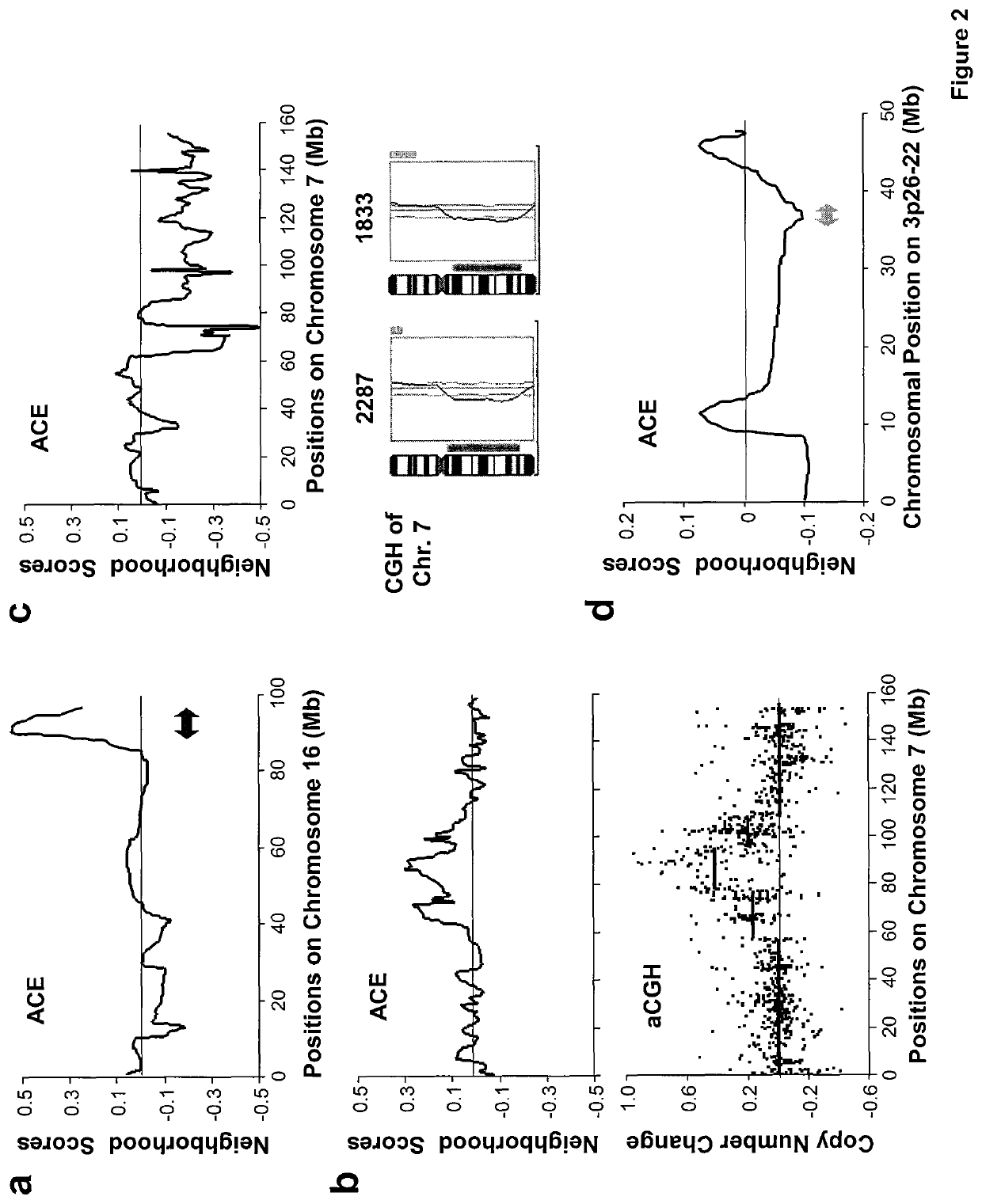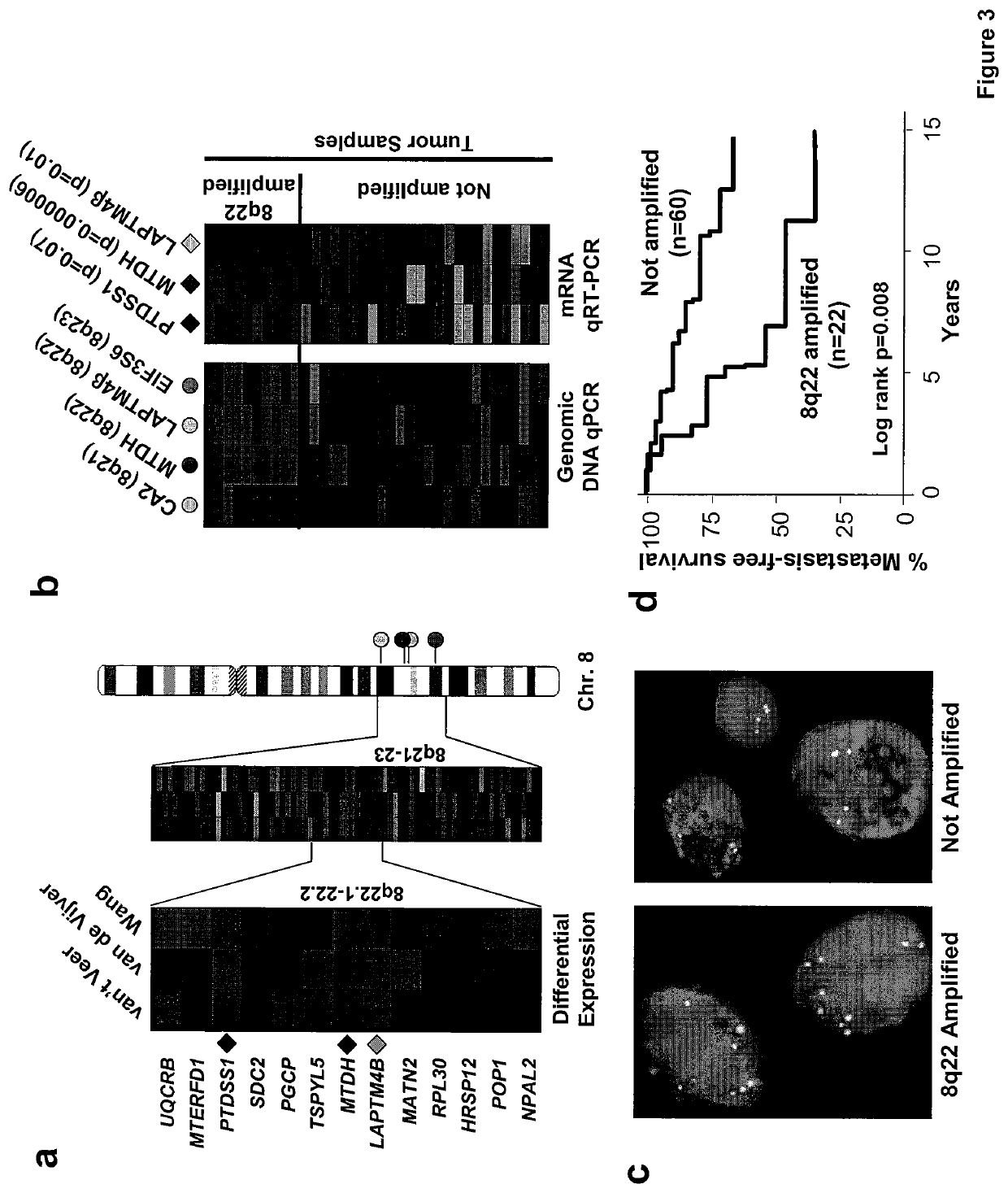Methods of identifying and treating poor-prognosis cancers
a breast cancer and poor-prognosis technology, applied in the field of methods for identifying breast cancer patients with poor-prognosis cancers, can solve the problems of preventing the development of targeted therapeutics and remaining a major obstacl
- Summary
- Abstract
- Description
- Claims
- Application Information
AI Technical Summary
Benefits of technology
Problems solved by technology
Method used
Image
Examples
Embodiment Construction
[0195]Recurrent DNA copy number alterations (CNAs) have been observed in a wide range of human cancers. Such genetic events often indicate the presence of key mediators of malignancy in the affected genomic loci. For example, elevated expression of oncogenes, such as c-Myc, CCND1, Her2 and EGFR122-26, often result from amplification of corresponding genomic segments. However, CNAs responsible for cancer metastasis are poorly characterized. Various techniques have been developed to detect genomic alterations, including fluorescence in situ hybridization (FISH), comparative genomic hybridization (CGH) and high-density single nucleotide polymorphism (SNP) genotyping27-30. Detection of CNAs by expression profiling analysis is theoretically possible since a strong correlation between genomic alterations and aberrant expression of genes in affected loci has been observed31. Accurate detection of CNAs using expression analysis, however, is technically difficult because gene expression data...
PUM
| Property | Measurement | Unit |
|---|---|---|
| thickness | aaaaa | aaaaa |
| temperature | aaaaa | aaaaa |
| pore size | aaaaa | aaaaa |
Abstract
Description
Claims
Application Information
 Login to View More
Login to View More - R&D
- Intellectual Property
- Life Sciences
- Materials
- Tech Scout
- Unparalleled Data Quality
- Higher Quality Content
- 60% Fewer Hallucinations
Browse by: Latest US Patents, China's latest patents, Technical Efficacy Thesaurus, Application Domain, Technology Topic, Popular Technical Reports.
© 2025 PatSnap. All rights reserved.Legal|Privacy policy|Modern Slavery Act Transparency Statement|Sitemap|About US| Contact US: help@patsnap.com



